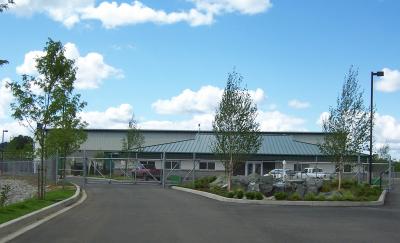- Departments
- Residents
- Business
- Visitors
Wastewater Division
Mission Statement
The Wastewater Division is responsible for treatment of wastewater from Chehalis, Napavine, Lewis County Sewer District #4 and associated service areas. Wastewater is treated to state and federal standards and discharged to the Chehalis River. The wastewater division also handles the planning, operation, and maintenance of all city wastewater facilities.
Services Provided
WASTEWATER TREATMENT - The division provides wastewater treatment through primary and advanced secondary processes to meet all applicable standards. Residual solids are treated to state and federal requirements before being recycled via land application. The division performs laboratory analysis, constituent monitoring, process control, biosolids, recycling, poplar farm maintenance, and facility operation and maintenance.
WASTEWATER SYSTEMS OPERATION & MAINTENANCE - The wastewater division operates and maintains the sanitary sewage collection system. Activities include collection system management, waste reduction, inflow and infiltration reduction, industrial pretreatment management, planning, design and construction.
EQUIPMENT/ELECTRICAL MAINTENANCE - This work includes maintenance of all wastewater system machinery, equipment and facilities, and all associated electrical, electronic and control circuitry.
ADMINISTRATION & PLANNING - This function involves the management and supervision of the various operations and programs of the division. It also includes planning and reporting efforts, regulatory compliance, capital improvement planning, utility rate studies, capacity analysis, and related functions.
Overview
The Chehalis Regional Water Reclamation Facility was constructed in 2007 to replace the city's sewage treatment plant built in 1948. The CRWRF was designed to meet stringent Department of Ecology permit requirements and projected wastewater treatment needs for the next twenty years. The CRWRF processes wastewater for the City of Chehalis, the City of Napavine, and Lewis County Water and Sewer District #4. The facility treats an average of 1.3 million gallons per day (MGD) and peak flows in excess of 10 MGD during the wet weather. In addition, the CRWRF is capable of producing 3.5 MGD reclaimed water for irrigation of the city's 250-acre poplar tree farm when flows in the Chehalis River drop below 1,000 cubic feet per second (CFS). The CRWRF has a staff of seven and maintains a state certified lab to perform numerous daily analysis for process control and regulatory monitoring.
LIQUID TREATMENT SYSTEM - Initial treatment begins at the headworks with two parallel 1/4-inch screens that remove rags and debris. The wastewater then goes through two grit removal units. After the grit is washed, the grit, rags and debris are disposed of at the landfill.
Wastewater is then directed to one of three Sequencing Batch Reactor (SBR) tanks by automated jplug valves. Each SBR has a capacity of 1.55 million gallons (MG). During the summer month only two basins are used, the third is brought online for wet-weather operation. Four 200 HP blowers supply air to the SBRs and mixing is done with three motive pumps located outside the SBRs. Each SBR has two floating decanters to direct treated effluent to one of two equalization (EQ) storage basins. One EQ has a capacity of 0.9 MG and the other 2.9 MG.
During wet weather, wastewater flows by gravity from the EQ basins to the Ultraviolet (UV) disinfection system and then is discharged by gravity to the Chehalis River. Three pumps with a capacity of 4,500 gallons per minute are used to pump effluent to the river during flood conditions.
During dry weather, treated wastewater is piped from the EQ basins to the chemical feed building where alum is injected prior to a sand filtration process. After sand filtration the effluent or reclaimed water is UV disinfected and then discharged to the effluent pump station. Four 833 gpm pumps are used to pump reclaimed water to the poplar tree farm. Chlorine is injected inline so the reclaimed water has a chlorine residual of at least 0.5 mg/l.
The poplar tree farm, located off Hwy. 6, is divided into 11 management units and planted with nine different hybrid varieties. One or two units are irrigated at a time. Most of the water evaporated and any excess infiltrates into the ground. The trees grow eight to ten feet per year and are harvested every ten to fifteen years to make paper. plywood, furniture, etc. More information on the poplar tree farm HERE.
SOLIDS TREATMENT SYSTEM - At the end of each SBR treatment cycle a small portion of waste sludge is pumped to a 350,000 gallon holding tank. The sludge is dewatered by a belt filter process to approximately 15% solids. The solids then go to a lime pasteurization system and heated to 158 degrees F and the pH raised to 12, producing a class A biosolid. The biosolids are sold to local farmers for use on their various crop fields.

